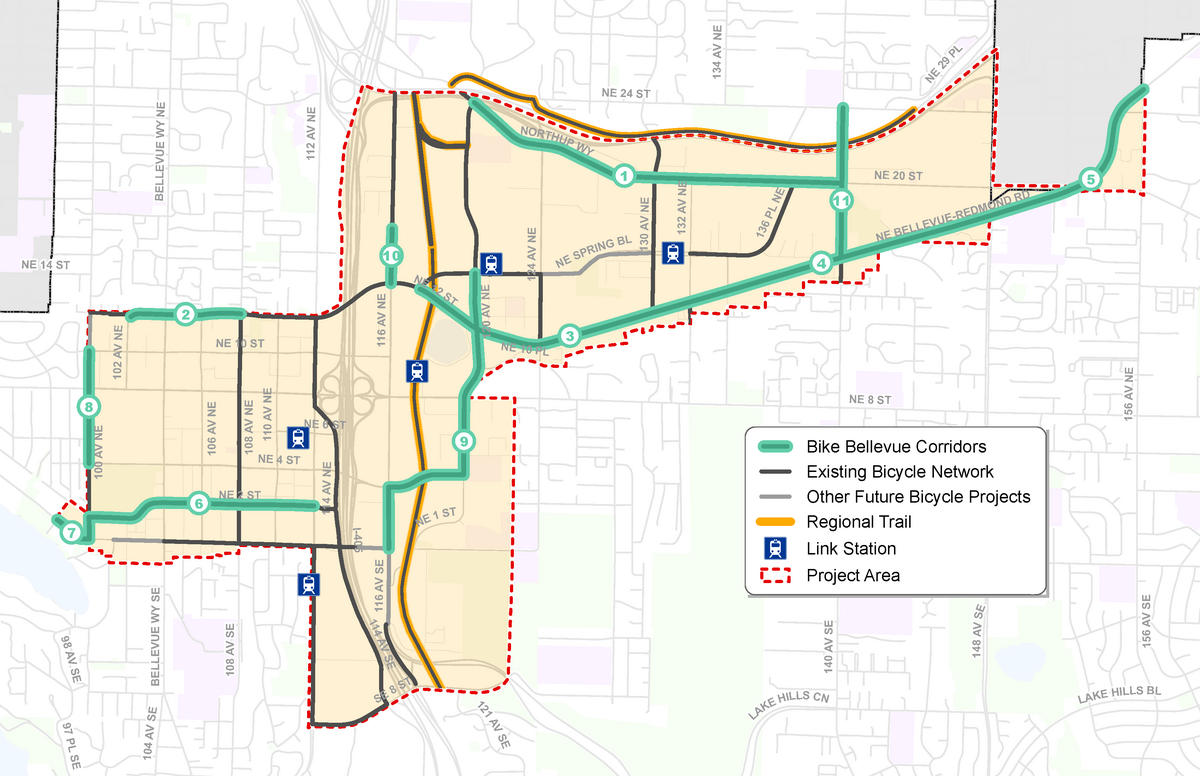
Rather than going project-by-project to build one-off bike projects, Bellevue is currently planning a more comprehensive and less incremental approach. The Eastside city is currently seeking feedback on what they are calling “Bike Bellevue,” a network of 11 projects that will build on existing work to create a connected network of bike routes in and near the city center and Spring District.
You can learn more about each of the proposed projects and submit feedback via their online survey.
Not only are many of these projects very promising, but approaching them as a network rather than single projects in isolation is smart. It puts each project in context rather than engaging the community about each individual and incomplete piece of what might some day be part of a network.
Bike Bellevue did not come out of nowhere, though. It’s based on more than a decade of previous planning as well as the city’s adopted strategic plan, as the city notes in the project description:
Bike Bellevue is the next step in improving the safety, connectivity and comfort of the bicycle network in the city. It builds on planning undertaken through the 2009 Pedestrian and Bicycle Transportation Plan, the 2016 Bicycle Rapid Implementation Program, the 2020 Vision Zero Strategic Plan and the 2022 Mobility Implementation Plan. These past efforts informed the council-approved project principles, which the Transportation Commission’s guide in developing Bike Bellevue.
The overall goal is to “allow people to travel on a dedicated network of bicycle facilities throughout the project area, greatly expanding access between homes, transit, jobs and recreation.” The improvements also target the city’s “high injury network,” which are the streets where most of the deaths and injuries occur. When all the projects are complete, about half of the city’s current high-injury streets will have “a bicycle network improvement,” according to the project description. That’s up from 13% today.
The survey includes project information about each of the 11 projects, complete with photo-realistic concept images. You can also look at the design concept diagrams for the projects and leave a comment about a specific location in the plan, which is pretty neat. Below is a quick look at all 11 projects. You can find their number on the map above. Click on the project name to go to that segment’s survey page.
01 – Northup Way / Northeast 20th Street
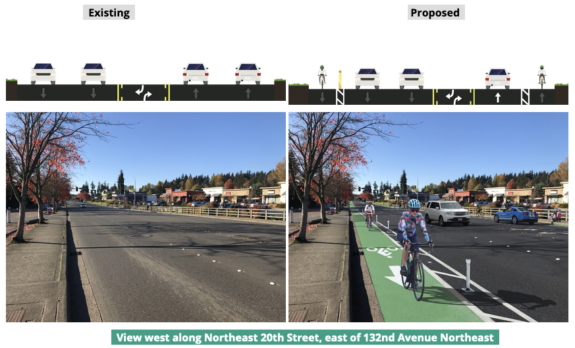
02 – Northeast 12th Street
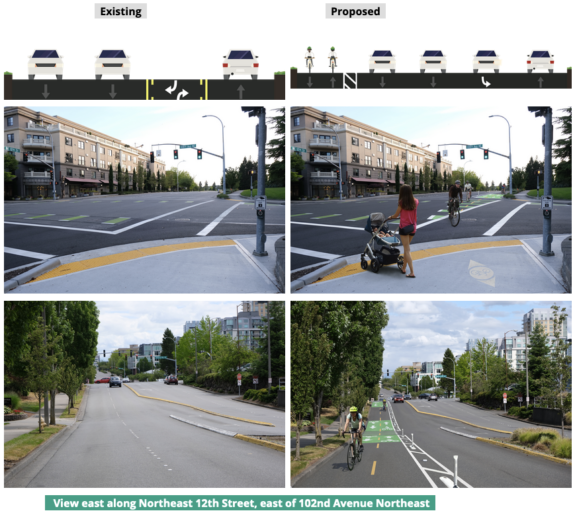
03 – Northeast 12th Street/Bel-Red Road
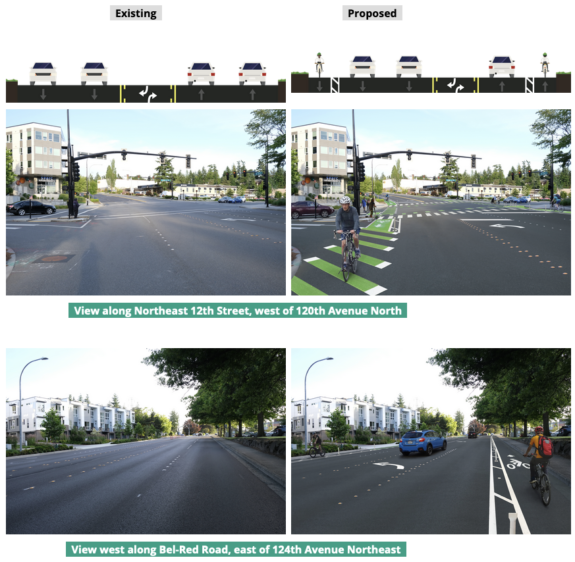
04 – Bel-Red Road
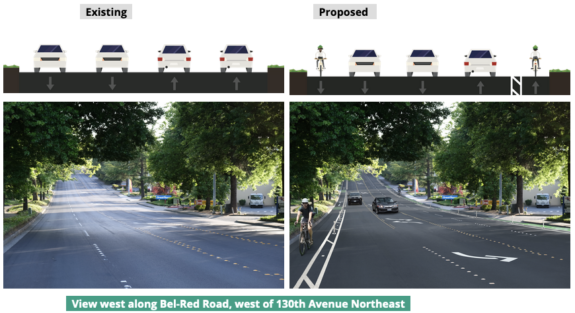
05 – Bel-Red Road
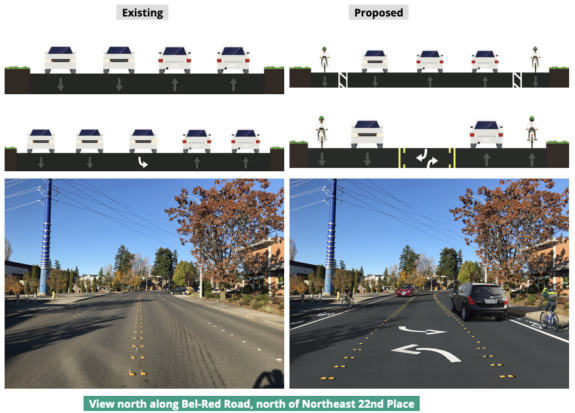
06 – Northeast 1st Street / Northeast 2nd Street
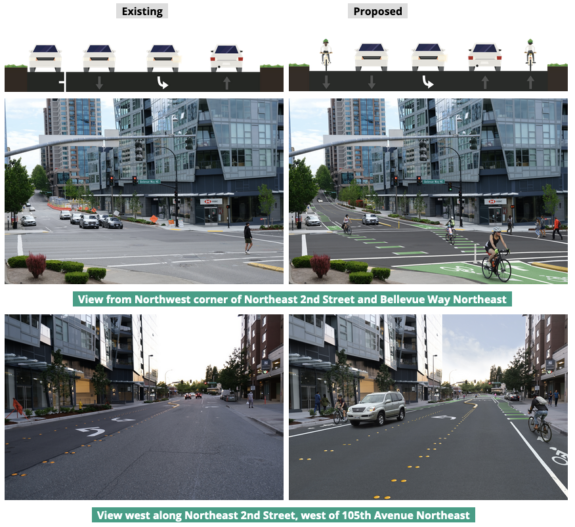
07 – Lake Washington Boulevard Northeast
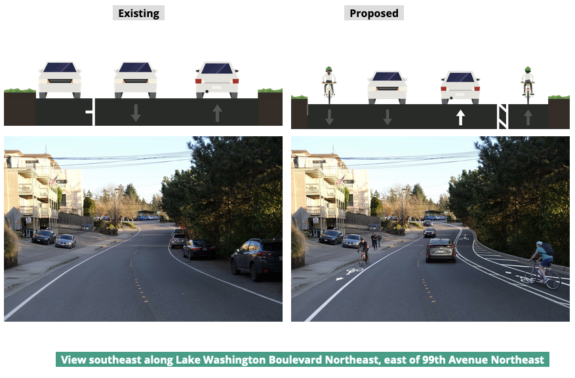
08 – 100th Avenue Northeast
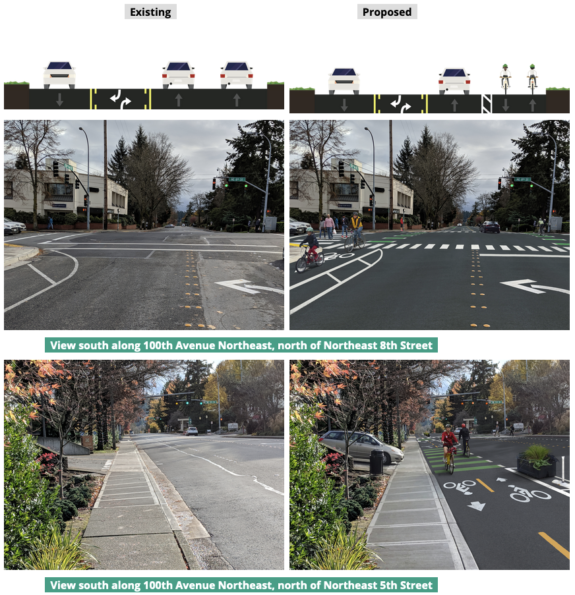
09 – Wilburton Route
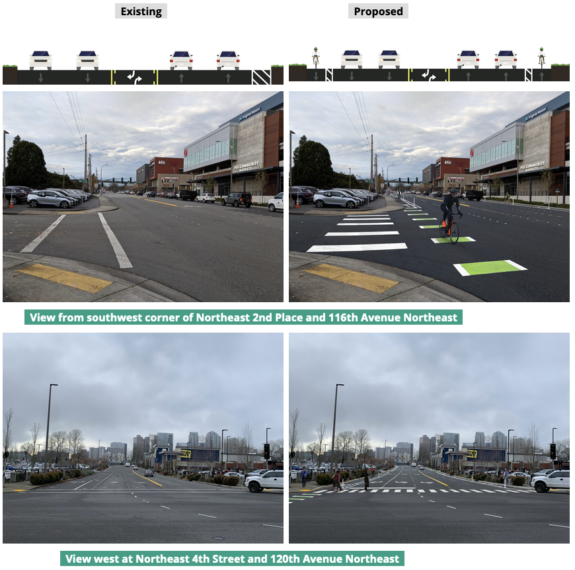
10 – 116th Avenue Northeast
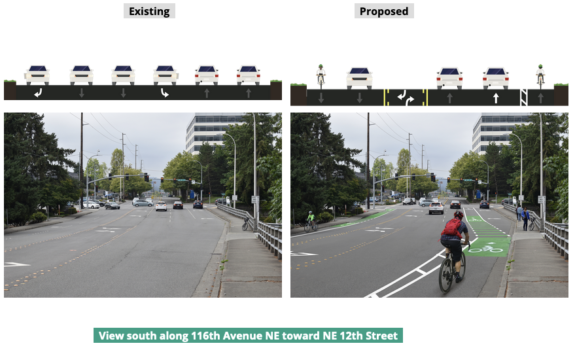
11 – 140th Avenue Northeast
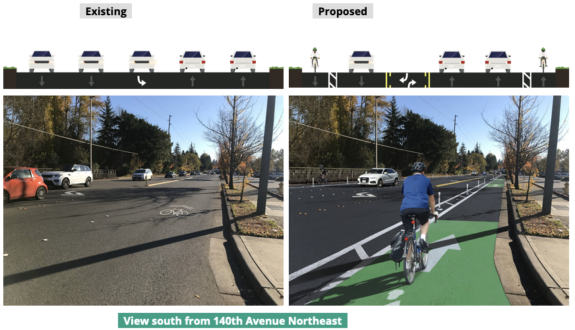








Comments
3 responses to “Bellevue seeks feedback on 11 bike projects, part of a less incremental approach to making bike improvements”
Wow, these mostly look great! The one big deficit, however, in nearly all of these is the lack of physical separation or protection. The paint, and paint and posts, should be augmented with a curb sufficient to protect vulnerable users in the bike lanes. Paint only lanes, in addition to not protecting occupants from moving vehicles, also allow vehicles to load/unload/park in bike lanes.
Seattle is starting to roll out curbs in several projects across the city, and Bellevue could jump ahead to making this a standard on all new bike facilities.
I think we’ve all seen exactly how much protection the posts in Seattle bike lanes offer (spoiler: none at all). Entire swaths of posts are broken off regularly as vehicles veer into the lanes, and they are slow to be replaced.
One of the big problems with Bellevue is commuting thru the city North/south. There is no good connection from the BNSF rail trail (Eastside rail trail) to Lake Washington Blvd into Kirkland.
That is also a problem coming across the I-90 bridge and going north to Kirkland.
If they actually have a plan to get this stuff built at better than incremental speed this does seem like just about the right plan for where Bellevue is now. Some of the routes farther east would be really transformative, just in making it basically possible for normal people to bike anywhere. Some of the “existing” segments aren’t actually any good, and there will still be improvements to do, and that’s the next step.
The part that will be more incremental is the more granular part. This network would get you across downtown but it’s coarse-grained. In downtown a lot of important destinations are along very busy streets with no plans for improvements, and many will be needed to make downtown thoroughly accessible by bike. Out east, where a lot of redevelopment is planned, all these questions will come up street-by-street — to avoid the mistakes of downtown Bellevue (and Seattle) we’ll need the streets in between the ones highlighted here to develop in ways that help people biking on the major routes (and walking from transit), instead of walling us off… that’s going to be a continual challenge, like always.